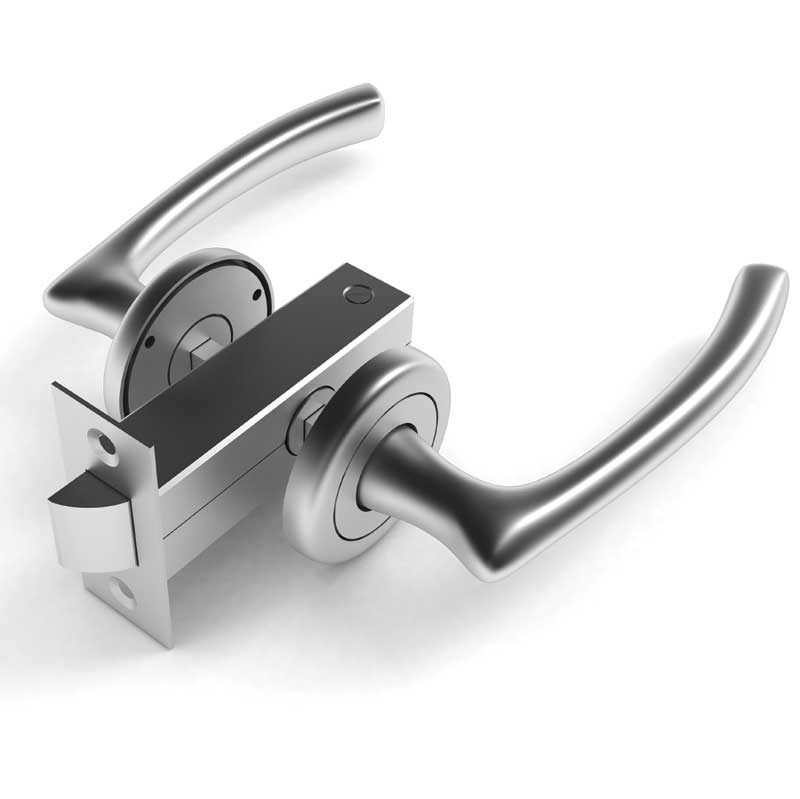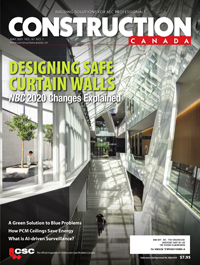Unlocking the door to green design

Photo © Getty Images
Reference service life
The building with an expected long life cycle is deemed more sustainable than a less robustly constructed building that will need to be demolished after a few decades of service. The same philosophy also applies to the builders hardware components of the building. Whenever a hardware component fails, not only are the resources for manufacturing a replacement product wasted, but there are also costs associated with maintenance and repair. Thus, the PCR for North American builders hardware gives high marks for higher grades of hardware; it has long been recognized by the construction industry and is intrinsic to the existing standards. Further, quality designations are analyzed in terms of contributions of life cycle to sustainability. With the new PCR in place, architects and specifiers have additional incentives to use high-quality products that have been tested and shown to have longer life cycles, comparable to the expected life cycle of the building itself.
The ANSI/BHMA 156 Series measures service life in terms of number of cycles. Typically, the ANSI Grade of builders hardware is expressed in terms of a verified cycle count (e.g. 1,000,000 cycles). The reference service life (RSL) is the number of cycles per year of a particular application (e.g. 50,000 cycles per year). Dividing the ANSI cycles by the RSL gives the number of years a hardware product can be expected to last in a particular application. This number is again divided by the average ESL of a building (60 years) to obtain the replacement factor. In this example, the replacement factor is three.
EPDs can be useful to architects and specifiers. Using the declarations, a specifier can be sure to employ the correct grade for an application to ensure the product will have a replacement factor of less than one; upgrading the product grade may be necessary for it to last as long as the building. A specifier might be motivated to use an EPD to obtain a higher sustainability rating for his or her building. In this manner, EPDs help establish greater transparency—not only for manufacturers, but also for the construction industry.
Recyclability of materials
Builders hardware products are usually composed of copper, zinc, and iron. Since these metals are highly recyclable, the raw material supply traditionally includes a recycled component.

Photos © Shutterstock
Another aspect of recyclability is related to the end-of-life assessment. How easily is the builders hardware removed from the building before it is demolished? Can it be reused? Here, the economics of the marketplace will determine the cost-effectiveness of the various options at the end of a product’s life.
When thinking of green buildings, energy efficiency typically comes to mind. As outlined above, there are many aspects of sustainability that have nothing to do with the building envelope.
The North American PCR for builders hardware and the EPDs for hardware product do not capture many of the environmental benefits. An operational energy use module (B6) could be included in the use stage, but products do not consume energy in their operation.
Often associated with ‘building energy efficiency,’ is the envelope itself, including critical construction materials such as roofing, insulation, fenestration, HVAC systems, and solar energy panels. However, builders hardware also plays a role in weatherproofing.
The control of door openings has a significant effect on energy efficiency, such as closers covered by ANSI/BHMA A156.4, Door Control Closers. Another important hardware component is gaskets, covered by ANSI/BHMA A156.22, Door Gasketing Edge Seal Systems. Gaskets are an effective means for preventing air infiltration. The quality of door hardware plays a role in energy efficiency, since a door that does not properly close is bound to waste energy until the component is repaired.

A new PCR for 2016
As previously mentioned, most builders hardware is covered by UL 9004. However, BHMA members have decided certain products merit their own PCR, leading to the development of a new PCR, Power-operated Pedestrian Doors and Revolving Doors, to be published later this year.
The LCA and environmental effects of power-operated doors is a topic of great interest. This product group includes manual revolving doors, as well as power-operated revolving doors, sliding doors, swinging doors, and folding doors for use by pedestrians. Energy efficiency of the motors and electronics associated with power-operated doors is not a major factor in determining the sustainability of these products. The energy savings gained in using revolving doors and power-operated doors makes up for any additional energy expended in using the door. Similar to UL 9004, this new PCR is being developed in conjunction with ASTM International’s EPD.
 Michael Tierney has served as the product standards co-ordinator for the Builders Hardware Manufacturers Association (BHMA) for 16 years, where he co-ordinates the development and revision of performance standards. Tierney came to BHMA following a 20-year career in manufacturing management at United Technologies, Honeywell, Black and Decker, and Yale Security. He is a principal member on technical committees for the National Fire Protection Association (NFPA), ASTM, and the American National Standards Institute (ANSI); he also chairs the ANSI Technical Advisory Group (TAG) 162 for Doors and Hardware. Tierney can be reached via e-mail at mtierney@kellencompany.com.
Michael Tierney has served as the product standards co-ordinator for the Builders Hardware Manufacturers Association (BHMA) for 16 years, where he co-ordinates the development and revision of performance standards. Tierney came to BHMA following a 20-year career in manufacturing management at United Technologies, Honeywell, Black and Decker, and Yale Security. He is a principal member on technical committees for the National Fire Protection Association (NFPA), ASTM, and the American National Standards Institute (ANSI); he also chairs the ANSI Technical Advisory Group (TAG) 162 for Doors and Hardware. Tierney can be reached via e-mail at mtierney@kellencompany.com.





